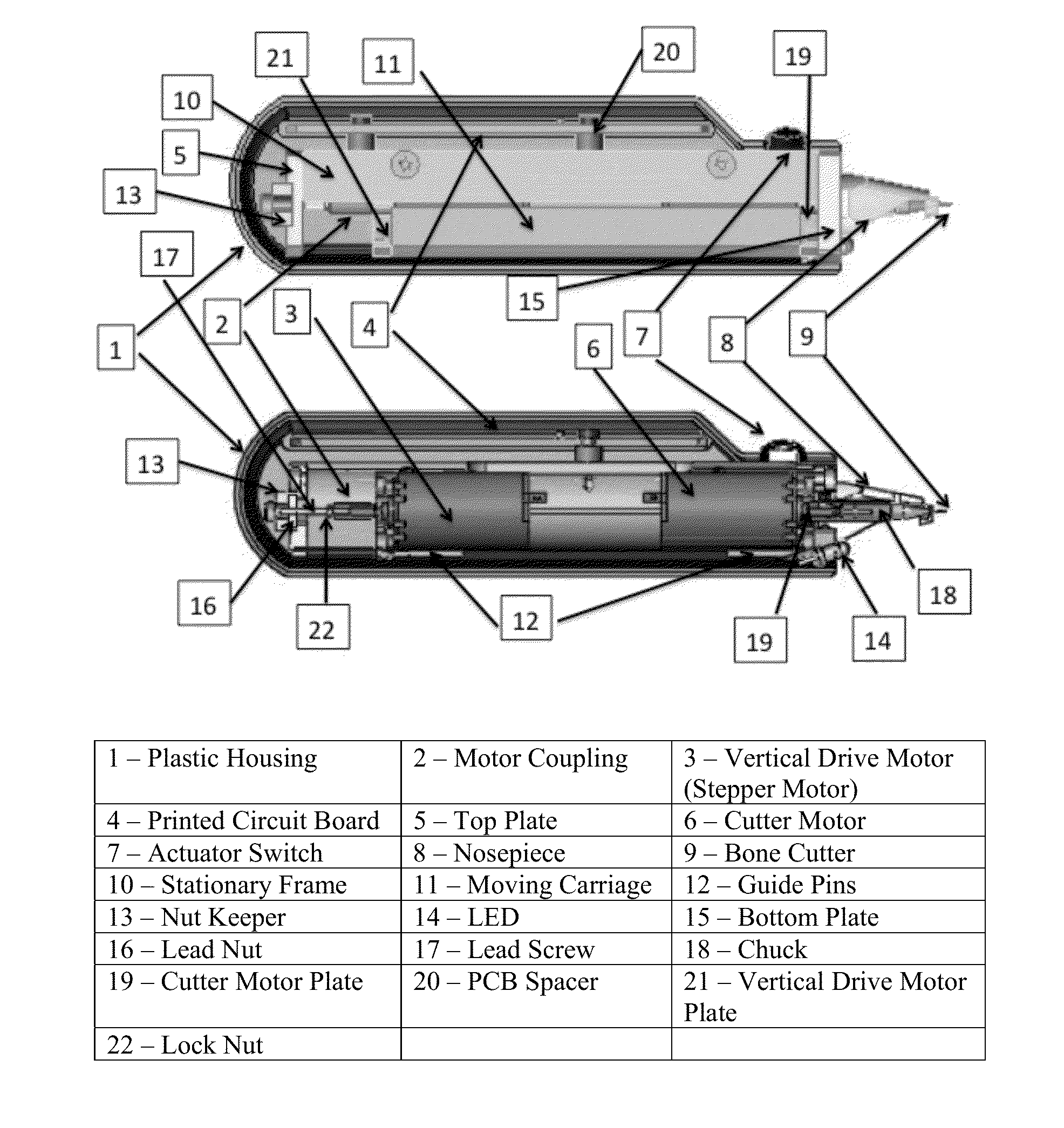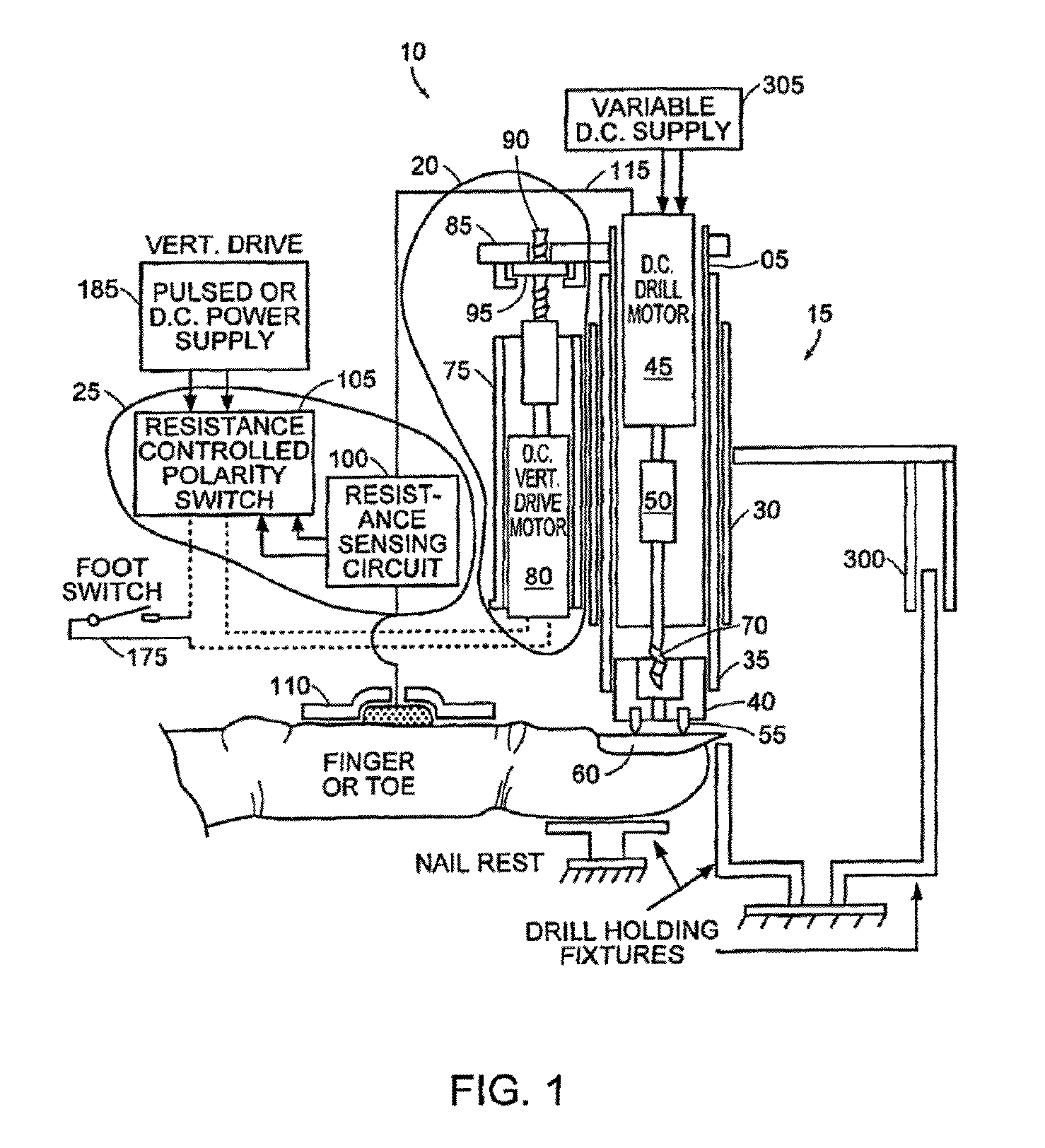Precision bone drill and method of use
a bone drill and precision technology, applied in the field of drilling devices and drilling procedures, can solve the problems of patient problems, most orthopedic and/or neurological hand-held drill devices do not provide any means of automatic depth control
- Summary
- Abstract
- Description
- Claims
- Application Information
AI Technical Summary
Benefits of technology
Problems solved by technology
Method used
Image
Examples
example
[0085]A cross-section of the bone drill and its components are shown in FIG. 3. The different parts are numbered in the caption. The bone drill consists of the following main functional elements: a bone cutter, foot, a bone cutter drive motor and a vertical drive motor. The cutter drive motor, mounted on a movable chassis, rotates the bone cutter. The vertical drive motor coupled to a lead screw steps the movable chassis toward / into or away / out of the bone tissue.
[0086]The components of the bone drill are housed in a plastic outer housing (Parts 1 and 2 in FIG. 3) that is split into fully conforming halves. The hand-actuated switch to operate the drill protrudes through an opening in the housing. The cables to the sensing electrodes are connected to the circuit board. The cables to the power supply are connected through an access port toward the back of the housing (FIG. 4).
[0087]The bone drill chassis has two parts: a stationary frame (Part 10 in FIG. 3) and a movable carriage (par...
PUM
 Login to View More
Login to View More Abstract
Description
Claims
Application Information
 Login to View More
Login to View More - R&D
- Intellectual Property
- Life Sciences
- Materials
- Tech Scout
- Unparalleled Data Quality
- Higher Quality Content
- 60% Fewer Hallucinations
Browse by: Latest US Patents, China's latest patents, Technical Efficacy Thesaurus, Application Domain, Technology Topic, Popular Technical Reports.
© 2025 PatSnap. All rights reserved.Legal|Privacy policy|Modern Slavery Act Transparency Statement|Sitemap|About US| Contact US: help@patsnap.com



